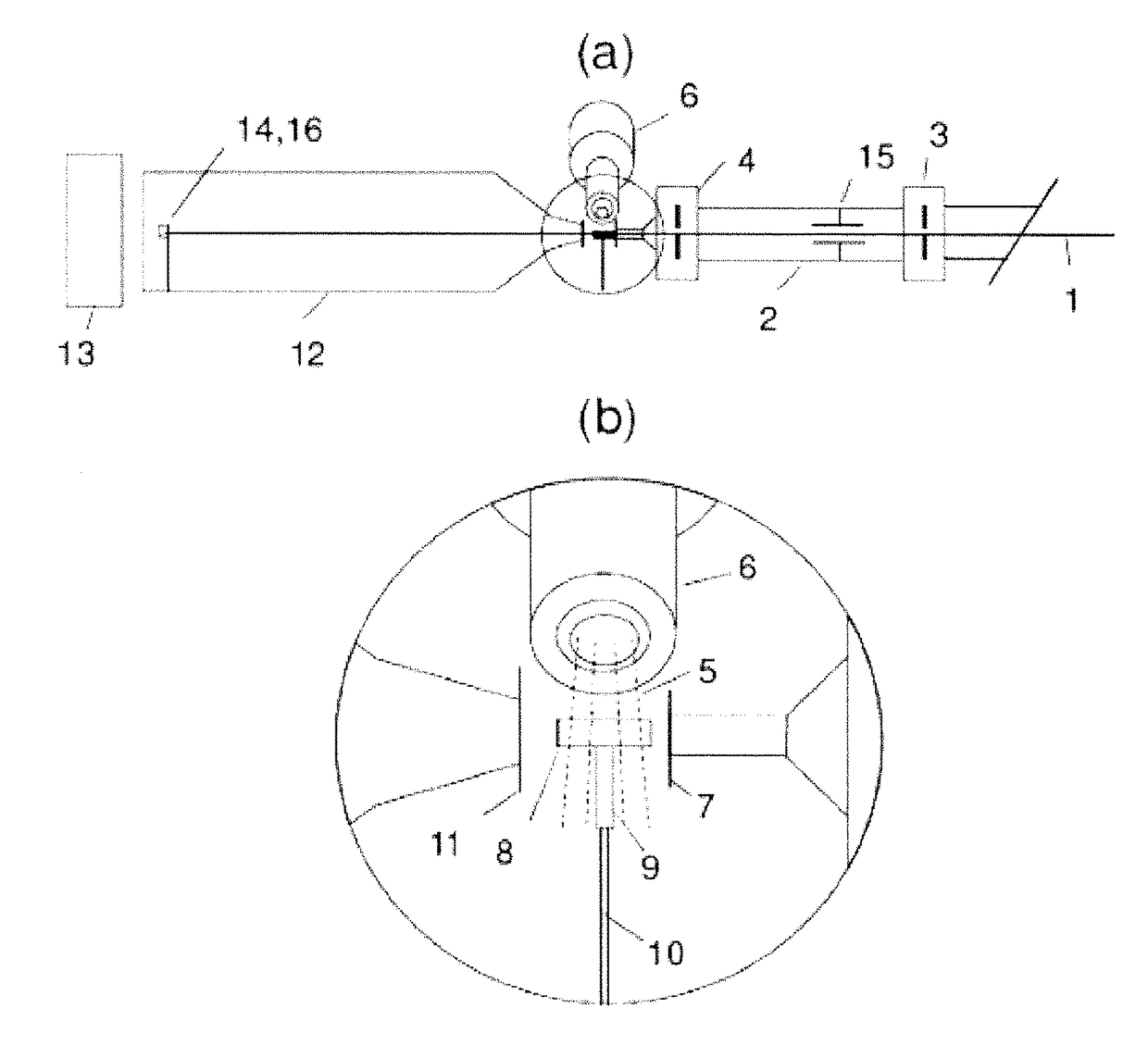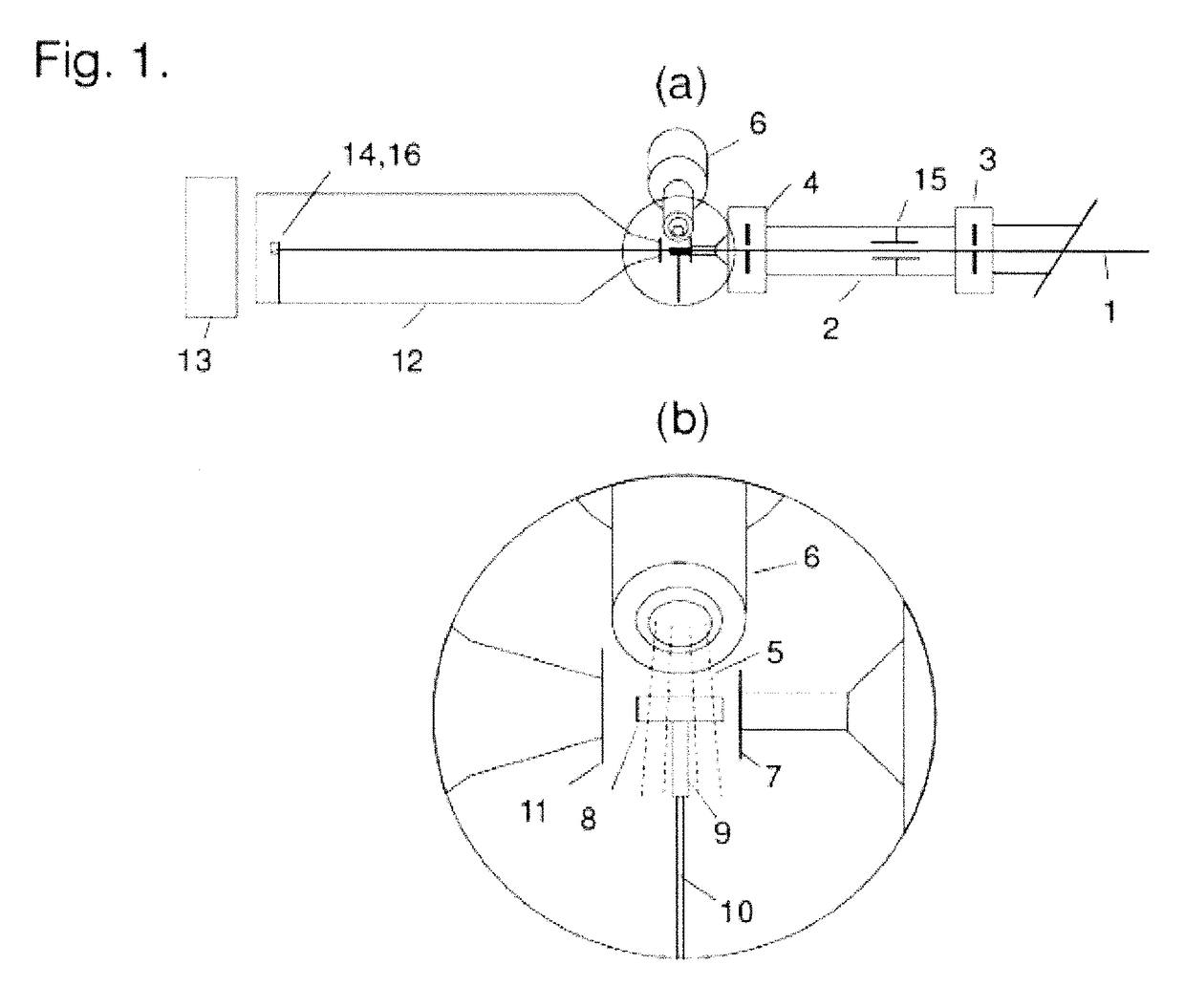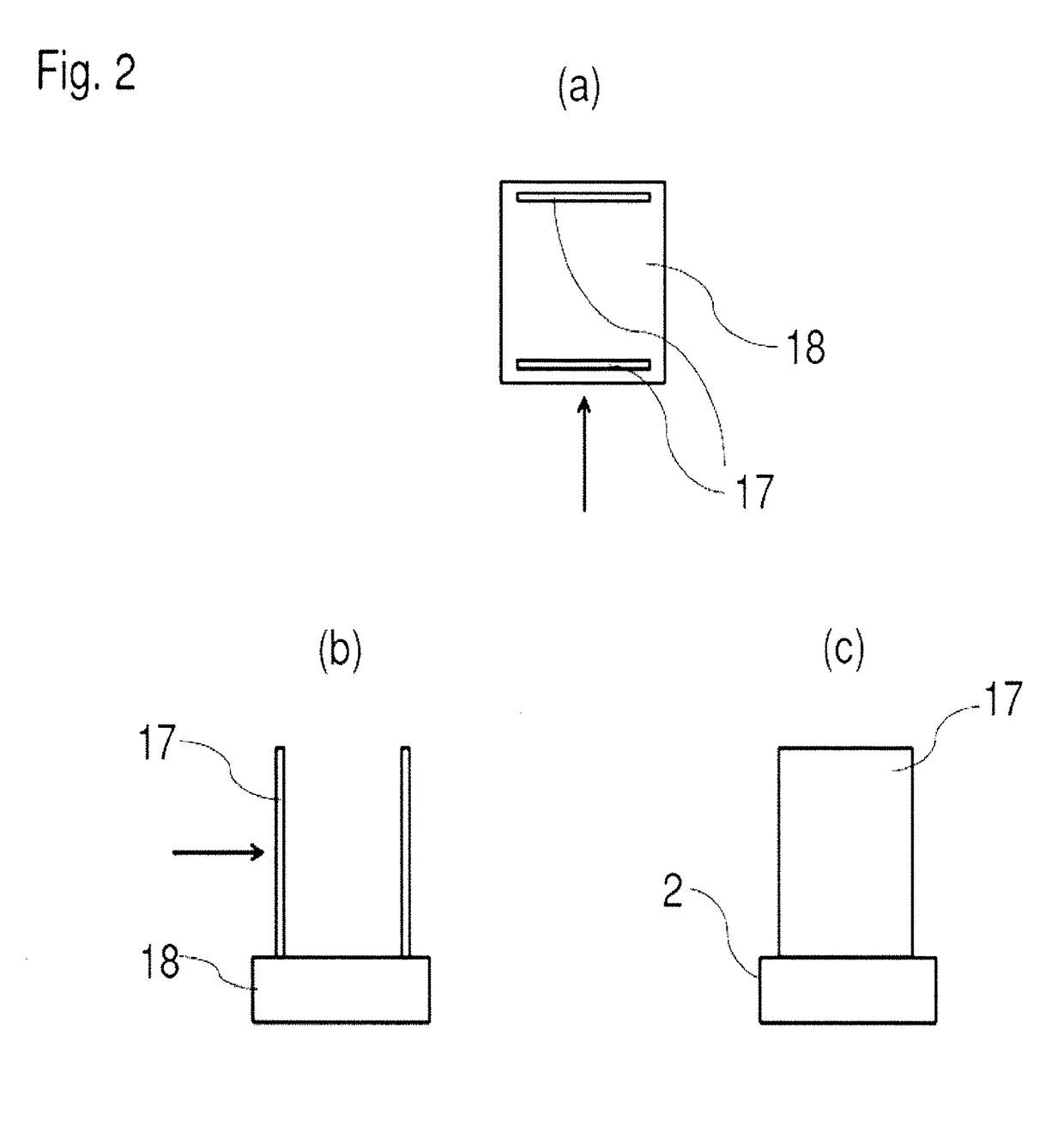Apparatus and methods for low temperature small angle X-ray scattering
a small angle x-ray and apparatus technology, applied in the field of biotechnology, can solve the problems of loss of (often expensive) proteins, difficult to prepare fully monodisperse and free solutions, and add cost and complexity to saxs setups, so as to facilitate subtraction of background scattering, improve saxs data quality, and rapid cooling
- Summary
- Abstract
- Description
- Claims
- Application Information
AI Technical Summary
Benefits of technology
Problems solved by technology
Method used
Image
Examples
Embodiment Construction
[0028]Embodiments of the invention include a system for cryo-SAXS measurements; methods for preparing biomolecular samples for cryo-SAXS measurements, measuring cryo-SAXS data, and analyzing this data to determine information about biomolecular structure; and sample cells and holders designed for rapid cooling of biomolecular solutions to ice-free states and for cryo-SAXS measurements.
Systems for Cryo-SAXS Measurements
[0029]FIG. 1 shows a system for measurements of small-angle X-ray scattering from biomolecular solutions at cryogenic temperatures. This system is based on experimental setups used in conventional SAXS on liquid samples, but modified in critical ways to enable measurements at cryogenic temperatures and to allow complications associated with cryo-SAXS samples to be addressed. X-ray beam 1 is produced by an X-ray source (a synchrotron source, a rotating anode source, a tube source, or a liquid metal jet source), and may pass through a monochromator (e.g., a single crysta...
PUM
| Property | Measurement | Unit |
|---|---|---|
| volume capacity | aaaaa | aaaaa |
| thickness | aaaaa | aaaaa |
| thickness | aaaaa | aaaaa |
Abstract
Description
Claims
Application Information
 Login to View More
Login to View More - R&D
- Intellectual Property
- Life Sciences
- Materials
- Tech Scout
- Unparalleled Data Quality
- Higher Quality Content
- 60% Fewer Hallucinations
Browse by: Latest US Patents, China's latest patents, Technical Efficacy Thesaurus, Application Domain, Technology Topic, Popular Technical Reports.
© 2025 PatSnap. All rights reserved.Legal|Privacy policy|Modern Slavery Act Transparency Statement|Sitemap|About US| Contact US: help@patsnap.com



